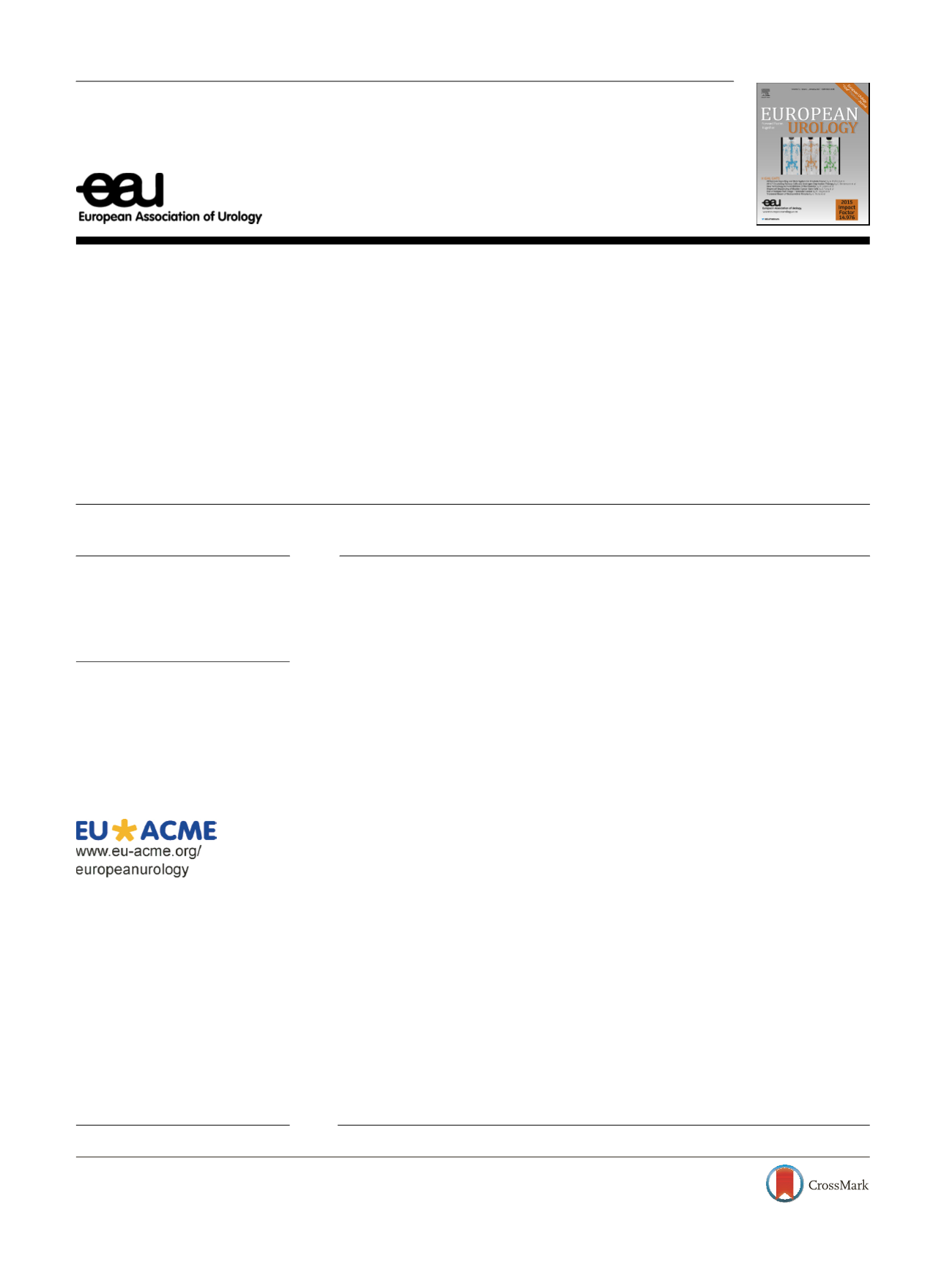

Platinum Priority – Prostate Cancer
Editorial by Juanita Crook on pp. 745–746 of this issue
Brachytherapy Boost Utilization and Survival in
Unfavorable-risk Prostate Cancer
Skyler B. Johnson
a ,Nataniel H. Lester-Coll
a ,Jacqueline R. Kelly
a ,Benjamin H. Kann
a ,James B. Yu
a , b ,Sameer K. Nath
a , *a
Department of Therapeutic Radiology, Yale School of Medicine, New Haven, CT, USA;
b
Cancer Outcomes, Public Policy, and Effectiveness Research Center,
Yale School of Medicine, New Haven, CT, USA
E U R O P E A N U R O L O G Y 7 2 ( 2 0 1 7 ) 7 3 8 – 7 4 4available at
www.scienced irect.comjournal homepage:
www.europeanurology.comArticle info
Article history:
Accepted June 8, 2017
Associate Editor:
Matthew Cooperberg
Keywords:
Unfavorable prostate cancer
Dose-escalated external-beam
radiation therapy
Low-dose rate brachytherapy
boost
Androgen suppression
Please visit
www.eu-acme.org/ europeanurologyto read and
answer questions on-line.
The EU-ACME credits will
then be attributed
automatically.
Abstract
Background:
There are limited comparative survival data for prostate cancer (PCa)
patients managed with a low-dose rate brachytherapy (LDR-B) boost and dose-escalated
external-beam radiotherapy (DE-EBRT) alone.
Objective:
To compare overall survival (OS) for men with unfavorable PCa between LDR-
B and DE-EBRT groups.
Design, setting, and participants:
Using the National Cancer Data Base, we identified
men with unfavorable PCa treated between 2004 and 2012 with androgen suppression
(AS) and either EBRT followed by LDR-B or DE-EBRT (75.6–86.4 Gy).
Outcome measurements and statistical analysis:
Treatment selection was evaluated
using logistic regression and annual percentage proportions. OS was analyzed using the
Kaplan-Meier method, log-rank test, Cox proportional hazards, and propensity score
matching.
Results and limitation:
We identified 25 038 men between 2004 and 2012, during
which LDR-B boost utilization decreased from 29% to 14%. LDR-B was associated with
better OS on univariate (7-yr OS: 82% vs 73%;
p
<
0.001) and multivariate analyses
(hazard ratio [HR] 0.70, 95% confidence interval [CI] 0.64–0.77). Propensity score
matching verified an OS benefit associated with LDR-B boost (HR 0.74, 95% CI
0.66–0.89). The OS benefit of LDR-B boost persisted when limited to men aged
<
60 yr with no comorbidities. On subset analysis, there was no interaction between
treatment and age, risk group, or radiation dose. Limitations include the retrospective
design, nonrandomized selection bias, and the absence of treatment toxicity, hormone
duration, and cancer-specific outcomes.
Conclusions:
Between 2004and2012, LDR-Bboost utilizationdeclined andwas associated
with better OS compared to DE-EBRT alone. LDR-B boost is probably the ideal treatment
option for men with unfavorable PCa, pending long-term results of randomized trials.
Patient summary:
We compared radiotherapy utilization and survival for prostate
cancer (PCa) patients using a national database. We found that low-dose rate brachy-
therapy (LDR-B) boost, a method being used less frequently, was associated with better
overall survival when compared to dose-escalated external-beam radiotherapy alone for
men with unfavorable PCa. Randomized trials are needed to confirm that LDR-B boost is
the ideal treatment.
#
2017 European Association of Urology. Published by Elsevier B.V. All rights reserved.
* Corresponding author. Department of Therapeutic Radiology, Yale School of Medicine, 333 Cedar
Street, New Haven, CT 06520, USA. Tel. +1 203 7855703.
E-mail address:
sameer.nath@yale.edu(S.K. Nath).
http://dx.doi.org/10.1016/j.eururo.2017.06.0200302-2838/
#
2017 European Association of Urology. Published by Elsevier B.V. All rights reserved.
















